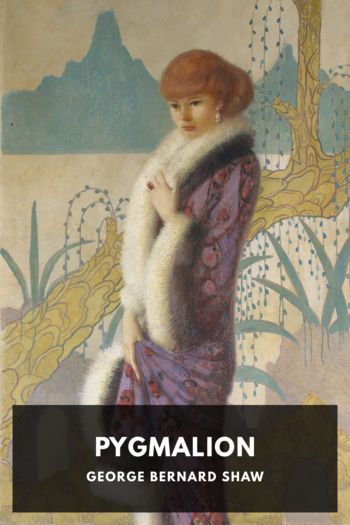Bulfinch’s Mythology Thomas Bulfinch (intellectual books to read TXT) 📖

- Author: Thomas Bulfinch
Book online «Bulfinch’s Mythology Thomas Bulfinch (intellectual books to read TXT) 📖». Author Thomas Bulfinch
After the death of Antiope, Theseus married Phaedra, daughter of Minos, king of Crete. Phaedra saw in Hippolytus, the son of Theseus, a youth endowed with all the graces and virtues of his father, and of an age corresponding to her own. She loved him, but he repulsed her advances, and her love was changed to hate. She used her influence over her infatuated husband to cause him to be jealous of his son, and he imprecated the vengeance of Neptune upon him. As Hippolytus was one day driving his chariot along the shore, a sea-monster raised himself above the waters, and frightened the horses so that they ran away and dashed the chariot to pieces. Hippolytus was killed, but by Diana’s assistance Aesculapius restored him to life. Diana removed Hippolytus from the power of his deluded father and false stepmother, and placed him in Italy under the protection of the nymph Egeria.
Theseus at length lost the favor of his people, and retired to the court of Lycomedes, king of Scyros, who at first received him kindly, but afterwards treacherously slew him. In a later age the Athenian general Cimon discovered the place where his remains were laid, and caused them to be removed to Athens, where they were deposited in a temple called the Theseum, erected in honor of the hero.
The queen of the Amazons whom Theseus espoused is by some called Hippolyta. That is the name she bears in Shakespeare’s “Midsummer Night’s Dream,”—the subject of which is the festivities attending the nuptials of Theseus and Hippolyta.
Mrs. Hemans has a poem on the ancient Greek tradition that the “Shade of Theseus” appeared strengthening his countrymen at the battle of Marathon.
Theseus is a semi-historical personage. It is recorded of him that he united the several tribes by whom the territory of Attica was then possessed into one state, of which Athens was the capital. In commemoration of this important event, he instituted the festival of Panathenaea, in honor of Minerva, the patron deity of Athens. This festival differed from the other Grecian games chiefly in two particulars. It was peculiar to the Athenians, and its chief feature was a solemn procession in which the Peplus, or sacred robe of Minerva, was carried to the Parthenon, and suspended before the statue of the goddess. The Peplus was covered with embroidery, worked by select virgins of the noblest families in Athens. The procession consisted of persons of all ages and both sexes. The old men carried olive branches in their hands, and the young men bore arms. The young women carried baskets on their heads, containing the sacred utensils, cakes, and all things necessary for the sacrifices. The procession formed the subject of the bas-reliefs which embellished the outside of the temple of the Parthenon. A considerable portion of these sculptures is now in the British Museum among those known as the “Elgin marbles.”
Olympic and Other GamesIt seems not inappropriate to mention here the other celebrated national games of the Greeks. The first and most distinguished were the Olympic, founded, it was said, by Jupiter himself. They were celebrated at Olympia in Elis. Vast numbers of spectators flocked to them from every part of Greece, and from Asia, Africa, and Sicily. They were repeated every fifth year in midsummer, and continued five days. They gave rise to the custom of reckoning time and dating events by Olympiads. The first Olympiad is generally considered as corresponding with the year 776 BC. The Pythian games were celebrated in the vicinity of Delphi, the Isthmian on the Corinthian isthmus, the Nemean at Nemea, a city of Argolis.
The exercises in these games were of five sorts: running, leaping, wrestling, throwing the quoit, and hurling the javelin, or boxing. Besides these exercises of bodily strength and agility, there were contests in music, poetry, and eloquence. Thus these games furnished poets, musicians, and authors the best opportunities to present their productions to the public, and the fame of the victors was diffused far and wide.
DaedalusThe labyrinth from which Theseus escaped by means of the clue of Ariadne was built by Daedalus, a most skilful artificer. It was an edifice with numberless winding passages and turnings opening into one another, and seeming to have neither beginning nor end, like the river Maeander, which returns on itself, and flows now onward, now backward, in its course to the sea. Daedalus built the labyrinth for King Minos, but afterwards lost the favor of the king, and was shut up in a tower. He contrived to make his escape from his prison, but could not leave the island by sea, as the king kept strict watch on all the vessels, and permitted none to sail without being carefully searched. “Minos may control the land and sea,” said Daedalus, “but not the regions of the air. I will try that way.” So he set to work to fabricate wings for himself and his young son Icarus. He wrought feathers together, beginning with the smallest and adding larger,





Comments (0)